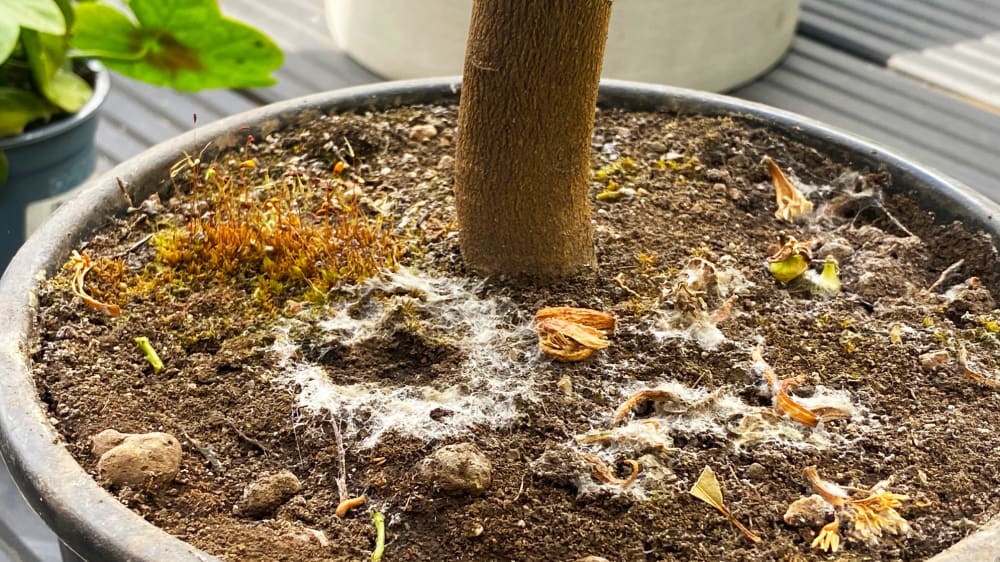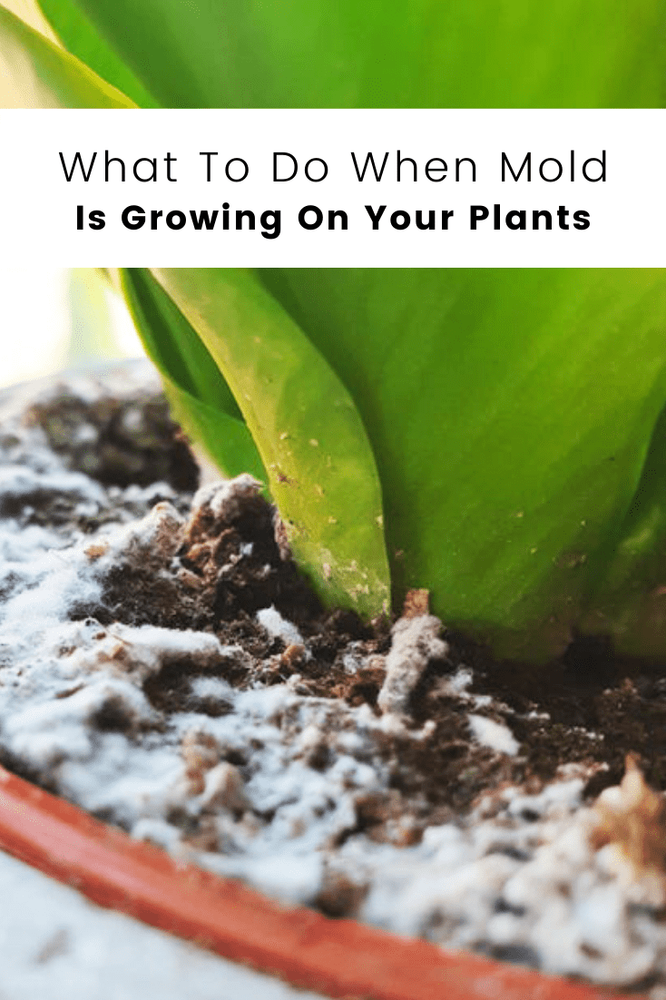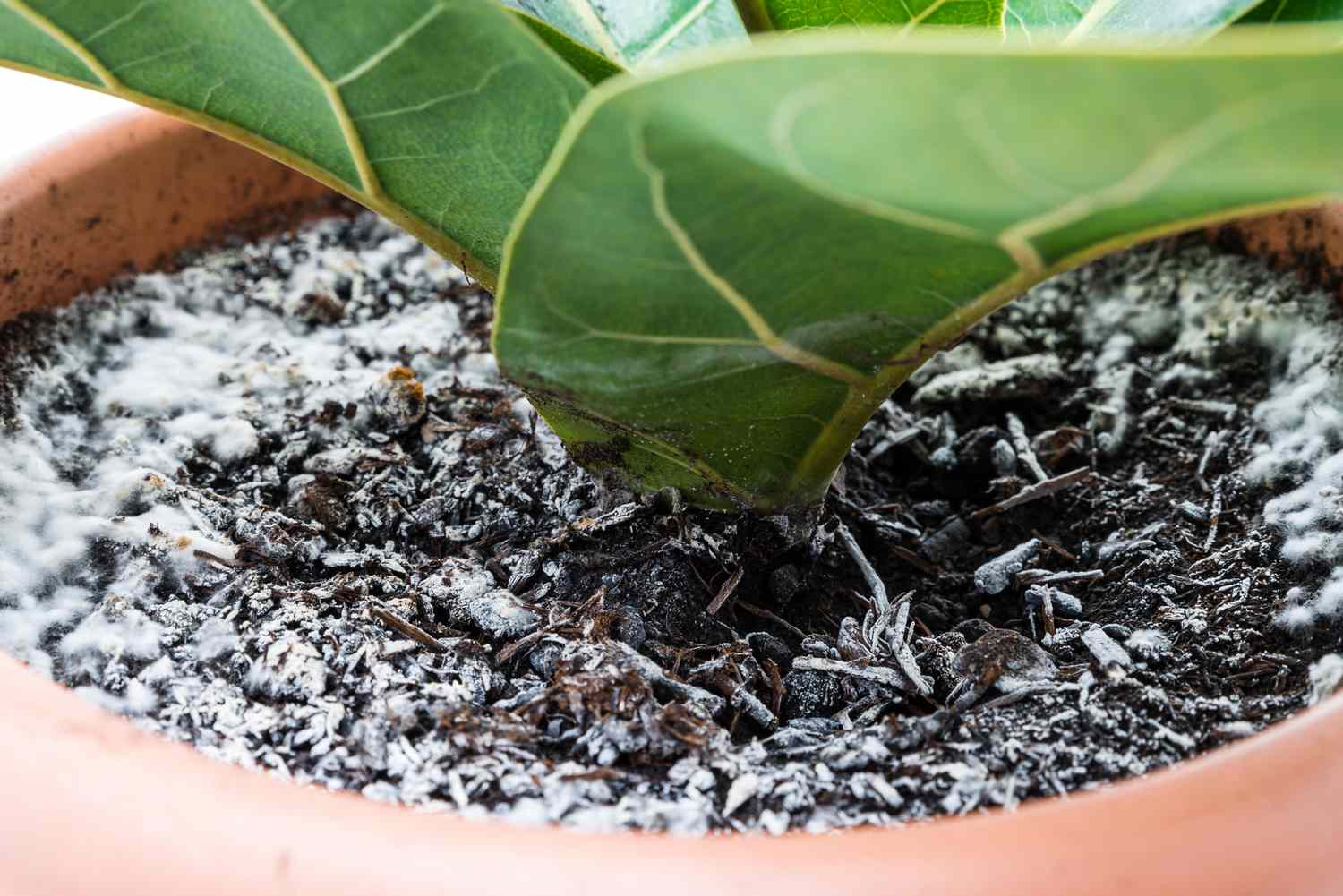Remove the moldy soil and replace it with fresh soil. Improve ventilation and reduce watering to prevent mold growth.
Houseplant soil can sometimes develop mold due to excess moisture and poor air circulation. Moldy soil not only looks unpleasant but also can harm your plants by promoting root rot and attracting pests. To tackle this issue, start by removing the affected soil and replacing it with fresh, well-draining soil.
Ensure your plants receive adequate ventilation and adjust your watering habits to avoid overwatering. By addressing the root causes and taking these preventive measures, you can maintain healthy and vibrant houseplants. Regularly checking the soil and ensuring proper plant care routines will help prevent mold from returning.
Identifying Mold In Houseplant Soil
Discovering mold in your houseplant soil can be alarming. Mold can harm your plants and affect indoor air quality. Knowing how to identify mold is the first step to addressing the issue.
Common Signs
- White or gray fuzzy patches: These patches are the most common mold signs.
- Musty smell: A strong, unpleasant odor indicates mold presence.
- Discolored soil: Soil may appear darker or have spots.
Types Of Mold
Different molds can appear in houseplant soil. Each type has unique characteristics:
| Type | Appearance | Impact |
|---|---|---|
| White Mold | White, fluffy patches on the soil surface. | Harmless but unsightly. Indicates overwatering. |
| Gray Mold | Gray, fuzzy growth that spreads quickly. | Can be harmful. Often found in damp, cool conditions. |
| Black Mold | Black, slimy patches. Often sticky. | Very harmful. Indicates poor drainage and severe issues. |
Identifying the type of mold helps in choosing the right treatment. Keep an eye out for these signs and types to protect your houseplants.

Credit: www.patchplants.com
Causes Of Mold Growth
Mold in houseplant soil can be a common issue. Understanding the causes helps prevent it. The main reasons include overwatering and poor ventilation.
Overwatering
Overwatering is a frequent cause of mold growth. Waterlogged soil creates a damp environment. Mold thrives in wet soil. Here are some signs of overwatering:
- Soil always feels wet.
- Leaves turn yellow or wilt.
- Roots may rot.
To prevent overwatering, water only when the top inch of soil feels dry. Use pots with drainage holes. This helps excess water escape.
Poor Ventilation
Poor ventilation can lead to moldy soil. Stagnant air allows moisture to linger. Mold spores spread easily in such conditions. Improving ventilation can help:
- Place plants in areas with good air circulation.
- Avoid crowding plants together.
- Use fans to circulate air.
Good air flow keeps the soil dry. This reduces the chance of mold growth.
Health Risks Of Moldy Soil
Moldy soil in houseplants can pose several health risks. It affects both plant health and human health. Mold can weaken plants and cause illnesses in humans. It’s important to address moldy soil promptly.
Plant Health
Moldy soil is bad for plants. It can lead to root rot. Root rot kills the roots of the plant. Dead roots can’t absorb water or nutrients. This causes the plant to wilt and die.
Plants with moldy soil may also develop yellow leaves. Yellow leaves are a sign of stress. The plant is struggling to survive. Mold can also spread to other plants. This can lead to a bigger problem in your home.
It’s important to remove moldy soil quickly. Replace it with fresh, clean soil. This helps keep your plants healthy and strong.
Human Health
Moldy soil can also affect human health. Mold spores can become airborne. People can inhale these spores. This can cause respiratory problems.
Children and people with allergies are more at risk. They may experience sneezing, coughing, and itchy eyes. Mold can also trigger asthma attacks. It’s important to keep indoor air clean and free of mold.
To reduce health risks, wear gloves when handling moldy soil. Wash your hands thoroughly afterward. Keep plants in well-ventilated areas. This helps prevent mold growth.

Credit: www.gardeningtheme.com
Immediate Actions To Take
Discovering mold in your houseplant soil can be alarming. Mold can harm your plant’s health. Acting quickly is crucial. Here are immediate actions to handle moldy soil.
Removing Mold
First, you need to remove the mold. Use a spoon to scoop out the moldy soil. Dispose of it in a sealed bag. This stops mold spores from spreading.
Next, clean the plant’s pot. Wash it with soap and water. This kills any remaining mold spores. Let the pot dry completely before refilling it with soil.
Be sure to check the plant leaves too. If you see mold, wipe them gently with a damp cloth. You can use a mix of water and a bit of vinegar.
Changing Soil
If the mold problem is severe, changing the soil is best. Remove the plant from its pot carefully. Shake off the old soil from the roots. Be gentle to avoid damaging the roots.
Place the plant in fresh, sterile soil. Use soil made for houseplants. Avoid using garden soil, which can have mold spores.
| Action | Steps |
|---|---|
| Removing Mold |
|
| Changing Soil |
|
After changing the soil, water the plant lightly. Avoid overwatering, as excess moisture promotes mold growth.
Monitor the plant closely for any signs of mold returning. Keep the plant in a well-ventilated area. Ensure it gets enough sunlight.
Preventive Measures
Keeping houseplant soil mold-free involves some proactive steps. Implementing these measures can ensure your plants remain healthy and thriving. Focus on proper watering, improving air circulation, and other crucial aspects.
Proper Watering Techniques
Overwatering is a common cause of mold growth. Ensure you use the right watering techniques:
- Check soil moisture before watering. Insert your finger into the soil. Water only if it feels dry.
- Use pots with drainage holes. This prevents water from accumulating at the bottom.
- Water in the morning. This allows excess water to evaporate during the day.
- Avoid waterlogging. Ensure the soil is evenly moist but not soggy.
Improving Air Circulation
Good air circulation helps prevent mold growth. Here are some tips:
- Place plants in well-ventilated areas. Avoid crowded spots where air can’t flow freely.
- Use a fan to increase air movement around your plants.
- Avoid placing plants too close together. Give each plant enough space.
- Regularly open windows to let fresh air in.
Implementing these preventive measures can make a significant difference. Your houseplants will remain healthy, vibrant, and free from mold.
Choosing The Right Soil
Choosing the right soil is crucial for your houseplants’ health. Mold in soil often indicates poor drainage or a lack of proper nutrients. Selecting the appropriate potting mix and additives can prevent these issues. This section will guide you through the best choices for your plants.
Types Of Potting Mix
Different plants need different types of potting mix. Here are some common options:
- All-Purpose Potting Mix: Suitable for most indoor plants. It offers good drainage and aeration.
- Cactus and Succulent Mix: Designed for plants that need excellent drainage. It prevents root rot and mold growth.
- Orchid Mix: Contains bark and perlite. It provides the aeration orchids need.
- Seed Starting Mix: Light and fine-textured. Perfect for germinating seeds.
Soil Additives
Soil additives improve your potting mix’s quality. They can help with drainage, aeration, and nutrient retention. Here are some popular options:
| Soil Additive | Purpose |
|---|---|
| Perlite | Enhances drainage and aeration. |
| Vermiculite | Retains moisture and nutrients. |
| Sand | Improves drainage and prevents compaction. |
| Compost | Provides nutrients and improves soil structure. |
| Activated Charcoal | Prevents odor and keeps soil fresh. |
Using the right soil and additives can keep your houseplants healthy. Moldy soil often signals an imbalance. Adjusting your potting mix can solve this problem.
Natural Remedies For Mold
Discovering mold in your houseplant soil can be alarming. Mold not only looks unsightly but can also harm your plants. Fortunately, there are natural remedies to tackle this issue. In this section, we’ll explore effective methods using household items to keep your plants healthy and mold-free.
Using Cinnamon
Cinnamon is a natural fungicide that helps eliminate mold in plant soil. Follow these simple steps to use cinnamon:
- Remove the top layer of moldy soil.
- Sprinkle a generous amount of cinnamon on the soil surface.
- Ensure even coverage to maximize effectiveness.
- Wait for a few days and observe the results.
Cinnamon not only kills mold but also promotes plant growth. You can reapply it if needed.
Baking Soda Solutions
Baking soda is another excellent remedy for moldy soil. It is both safe and effective. Here is how you can use it:
- Mix one teaspoon of baking soda with two cups of water.
- Add a few drops of liquid soap to help the mixture stick.
- Pour the solution into a spray bottle.
- Spray the solution on the moldy areas of the soil.
Repeat this process every few days until the mold disappears. Baking soda balances the pH level of the soil, preventing mold growth.

Credit: www.ultimatemoldcrew.ca
Long-term Care Tips
Keeping your houseplants healthy is a long-term commitment. Moldy soil can be a common problem. Here are some tips to help you manage it effectively over time.
Regular Monitoring
Regularly check your houseplant soil for signs of mold. Use a magnifying glass if needed. Mold can appear white, green, or black. Catching mold early helps in preventing its spread.
Keep a record of your plant’s health. Note any changes in the soil or leaves. This helps you spot issues before they get worse. Use a calendar or an app to set reminders for regular checks.
Healthy Plant Habits
Good habits keep your plants and soil mold-free. Water your plants correctly. Avoid overwatering. Let the soil dry out between waterings. Use a moisture meter to check soil dampness.
Provide proper air circulation. Place your plants where they get fresh air. Use a fan if needed. Airflow helps in reducing mold growth. Keep your plants in a well-lit area. Sunlight kills mold spores.
Clean your plant’s leaves. Dust can attract mold. Wipe leaves with a damp cloth. Ensure the cloth is clean to avoid spreading mold. Trim dead leaves and stems. Dead plant material can harbor mold.
| Task | Frequency |
|---|---|
| Check for mold | Weekly |
| Water plants | When soil is dry |
| Clean leaves | Monthly |
| Provide air circulation | Daily |
Following these long-term care tips ensures your houseplants stay healthy. Regular monitoring and healthy habits make a big difference.
Frequently Asked Questions
Can You Save A Plant With Moldy Soil?
Yes, you can save a plant with moldy soil. Remove the mold, replace the soil, and ensure proper drainage.
Is Mold In Plant Soil Harmful?
Mold in plant soil can be harmful. It can indicate poor drainage or overwatering. Some molds may harm plants by depleting nutrients or causing root rot. To prevent mold, ensure proper drainage, avoid overwatering, and maintain good air circulation.
Why Do My Indoor Plants Have White Fuzz On The Soil?
White fuzz on your indoor plant soil is usually mold. Overwatering and poor ventilation can cause this. Reduce watering and improve airflow to fix it.
How Do You Sterilize Moldy Potting Soil?
Sterilize moldy potting soil by baking it at 180°F for 30 minutes. Cool before using. Avoid overheating.
Conclusion
Dealing with moldy houseplant soil is simple with the right steps. Remove affected soil, improve drainage, and adjust watering habits. Ensure good air circulation to prevent future mold. Healthy plants thrive in well-maintained environments. Keep an eye on soil conditions and act quickly to maintain plant health.
Happy gardening!

My mission is to help you bring the beauty of nature indoors with expert advice, detailed plant care guides, and creative design ideas.





Leave a Reply